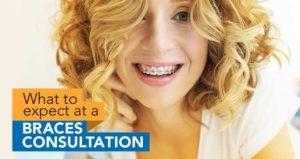Indicators on Legacy Orthodontics You Should Know
Indicators on Legacy Orthodontics You Should Know
Blog Article
Things about Legacy Orthodontics
Table of ContentsHow Legacy Orthodontics can Save You Time, Stress, and Money.Some Known Details About Legacy Orthodontics The Facts About Legacy Orthodontics Revealed5 Simple Techniques For Legacy OrthodonticsExamine This Report on Legacy Orthodontics
At Advanced Orthodontics, we give people with a all natural treatment experience. In addition, we provide adjustable treatment routines, adaptable settlement options and an enjoyable, delightful experience. orthodontist. Phone call ( 480) 357-4900 today to find out more and timetable an appointment.An orthodontist is a dental professional trained to identify, protect against, and treat teeth and jaw abnormalities. They fix existing problems and are educated to recognize troubles that might establish in the future. Orthodontists collaborate with individuals of every ages, from youngsters to adults. People often link an excellent smile with healthiness.
Malocclusion, or misaligned teeth, can bring about dental concerns, including dental cavity, periodontal illness, and challenging or excruciating eating. Not everybody is birthed with straight teeth. If you have a poor bite or big spaces in between your teeth, you may desire to speak with a dentist concentrating on orthodontic treatment.
Everything about Legacy Orthodontics
( Photo Debt: DigitalVision/Getty Images) Orthodontists utilize dealt with and detachable oral devices, like dental braces, retainers, and bands, to transform the position of teeth in your mouth. Orthodontic therapy is for dental irregularities, including: Crooked teethBite problems, like an overbite or an underbiteCrowded teeth or teeth that are as well far apartJaw misalignmentThe goal of orthodontic therapy is to boost your bite.
While you may believe of orthodontists as mainly for kids or teens that require dental braces, they can fix oral issues at any age. Orthodontists go to university, dental institution, and orthodontic school.
All orthodontists are dental practitioners, however not all dental professionals are orthodontists. Orthodontic residency programs provide extensive, focused direction for dental professionals. They concentrate on 2 locations: How to effectively and safely relocate teeth Just how to effectively assist advancement in the teeth, jaw, and faceOnce an orthodontist has actually finished training, they have the option to become board accredited.
The Buzz on Legacy Orthodontics
Malocclusion leads to tooth overcrowding, an irregular jaw, or irregular bite patterns. Malocclusion is typically treated with: Your orthodontist attaches steel, ceramic, or plastic square bonds to your teeth.
If you have only small malocclusion, you may be able to use clear braces, called aligners, rather of traditional braces (https://www.figma.com/design/kgqCY8l54dyz5KdMEWTWil/Untitled?node-id=0-1&t=R12PkCtJ5eBOkvHF-1). Some individuals require a headgear to help move teeth into line with stress from outside the mouth. After dental braces or aligners, you'll require to wear a retainer. A retainer is a custom tool that maintains your teeth in position.
They can produce additional area in the mouth without having to draw teeth. Orthodontists use cables, medical screws, or plates to support your jaw bone.
You may require to see an orthodontist if you have: Crowding or not enough area for all of your teethOverbite, when your top teeth come by your base teethUnderbite, when your bottom teeth are too far forwardSpacing or problems with gapsCrossbite, which is when your top teeth fit behind your base teeth when your mouth is closedOpen bite or a vertical gap between your front bottom and top teethMisplaced midline, when the facility of your bottom and upper teeth do not line up Fixing a dental malocclusion can: Make attacking, chewing, and talking easierImprove the proportion of our face and your total appearanceEase discomfort from temporomandibular joint disordersDifferent your teeth and make them easier to clean, assisting avoid dental cavity or tooth cavities It's frequently a dental expert who initially notifications misaligned teeth during a routine examination.
Little Known Questions About Legacy Orthodontics.

Throughout your very first orthodontic consultation, you'll likely have: An oral examPhotos taken of your face and smileDental X-raysPanoramic (360 level) X-rays of your face and headImpressions to produce molds of your teethThese examinations will aid your orthodontist know how to continue link with your therapy. leesburg orthodontist. An orthodontist is a dentist who's had training to treat your teeth and jaw
Orthodontists might carry out surgical treatment, exams,X-rays,and more to assist you attain an extra comfy, much healthier smile. An orthodontist is concentrated on your bite, so something like a damaged tooth would be dealt with by a dental expert. Orthodontists are dental professionals however not all dental professionals are orthodontists. Orthodontists are focused on your bite, or the method your teeth meshed, and the straightness of your teeth.
Ever before asked yourself just how celebs constantly seem to have perfectly lined up teeth? Orthodontists are oral professionals that concentrate on fixing abnormalities in the teeth and jaws.
The Definitive Guide to Legacy Orthodontics

, orthodontists have a varied toolkit at their disposal. These tried-and-true braces use a system of brackets bonded to the teeth and attached by cords.
These detachable trays are personalized to progressively move the teeth's setting. In situations of slim jaws, palatal expanders can be used to create room for correct tooth alignment.
Report this page